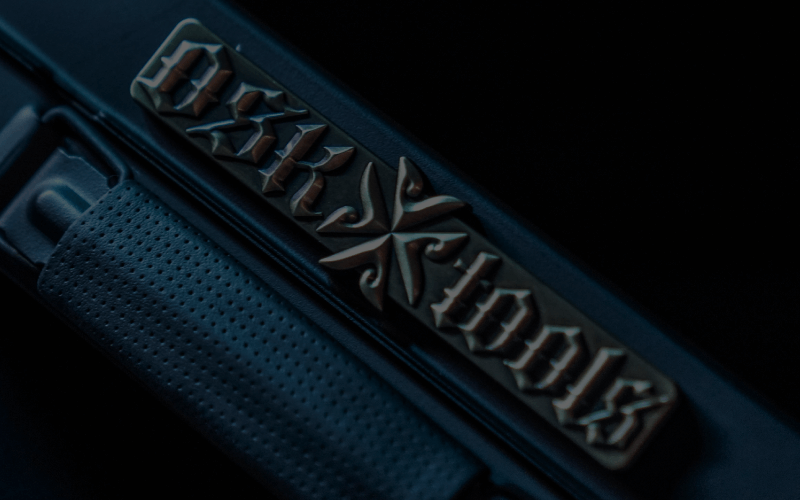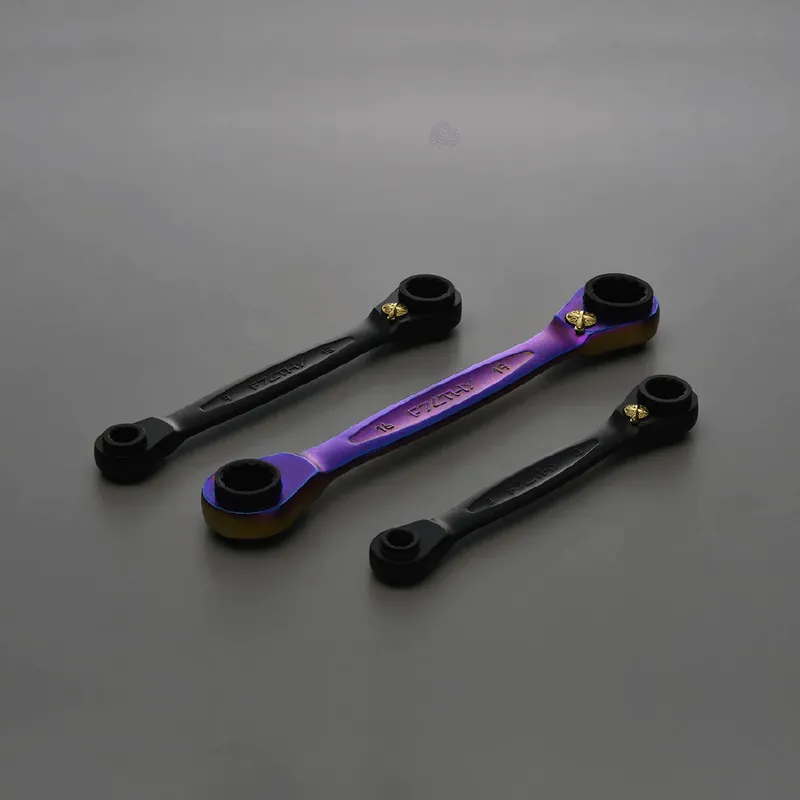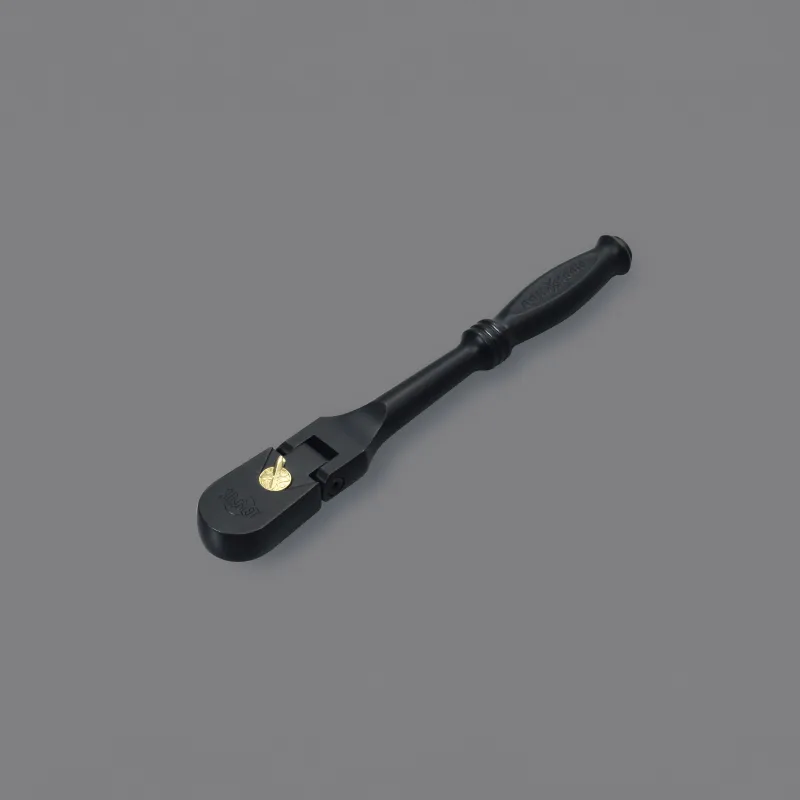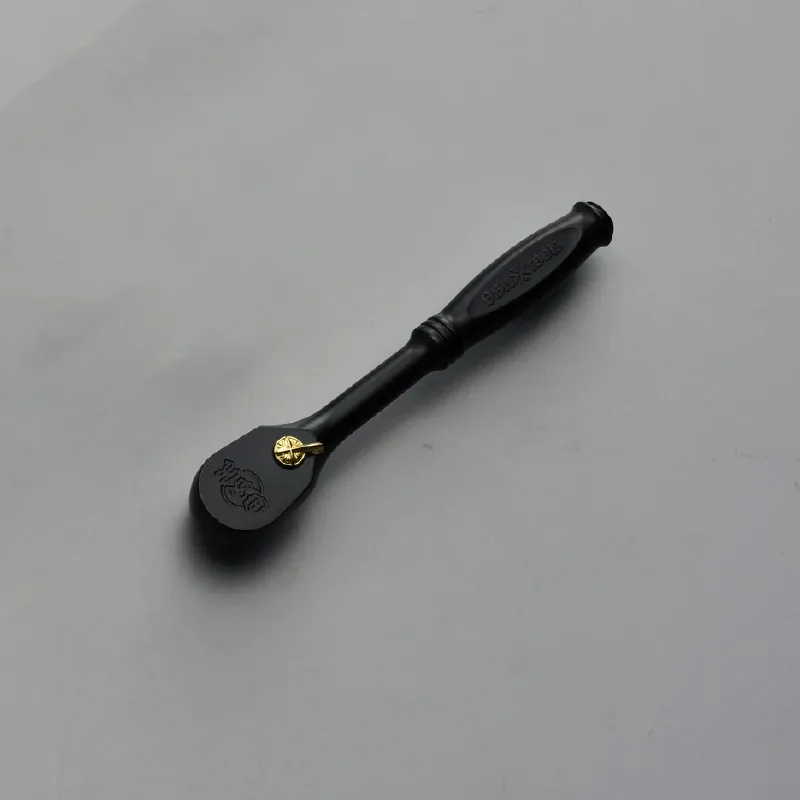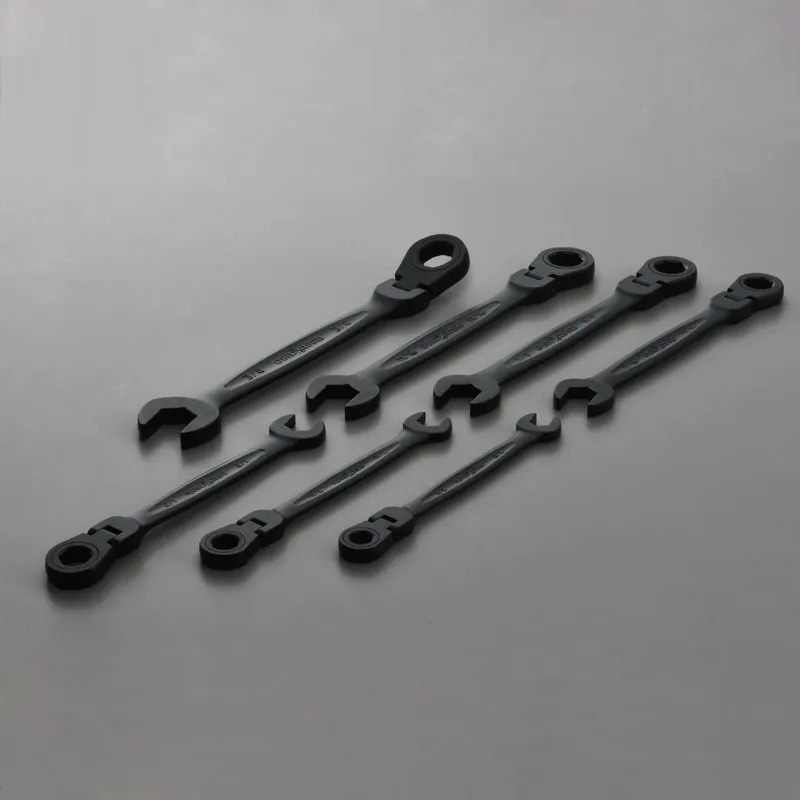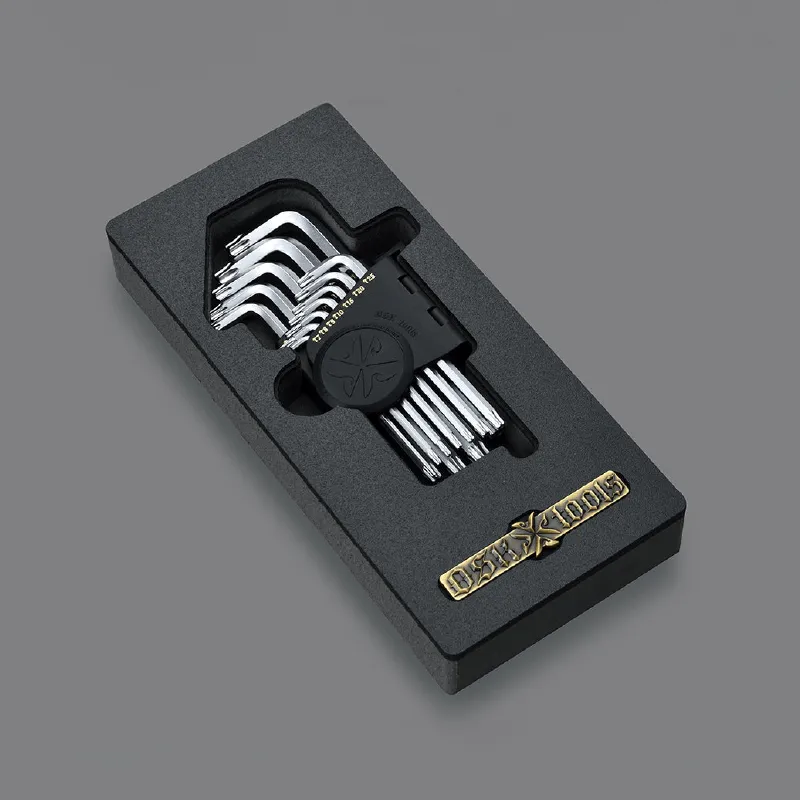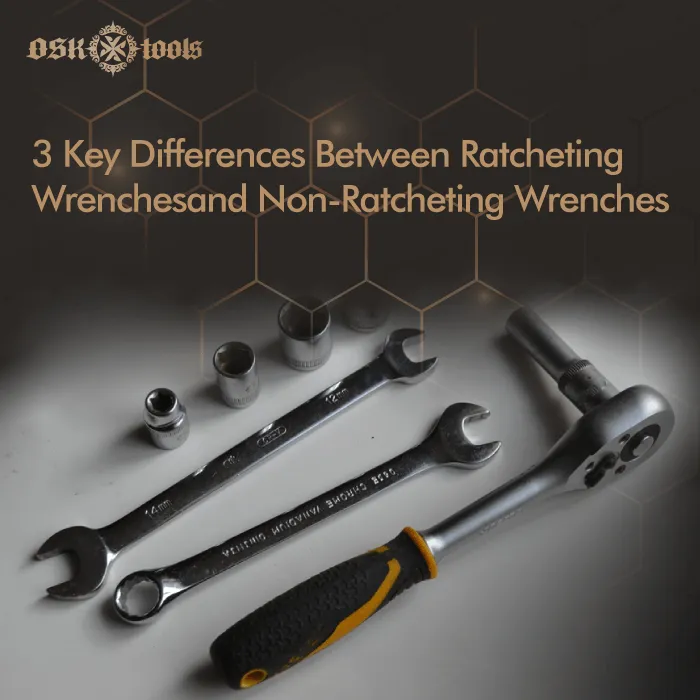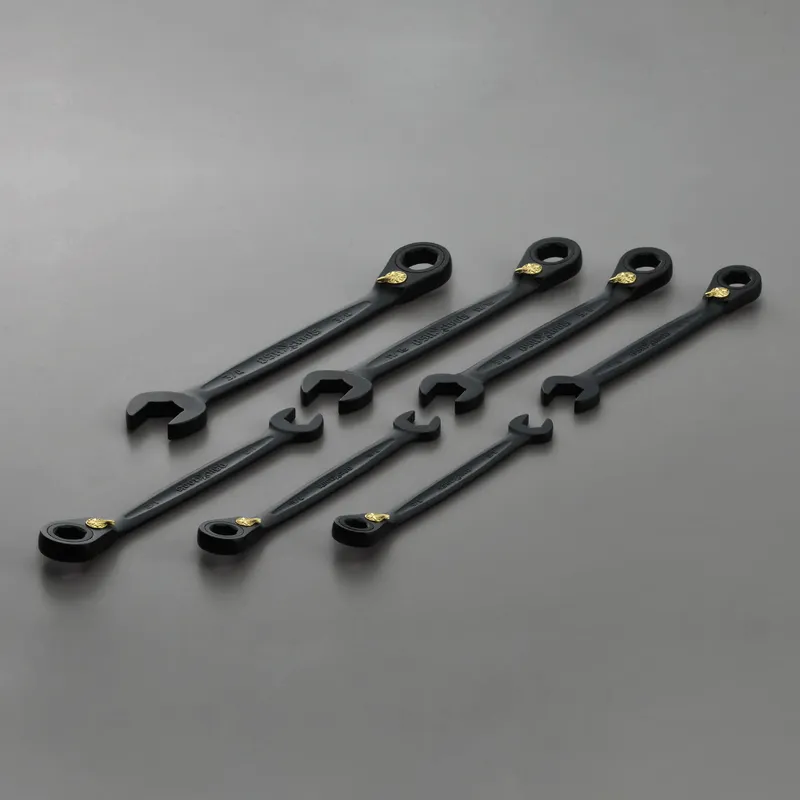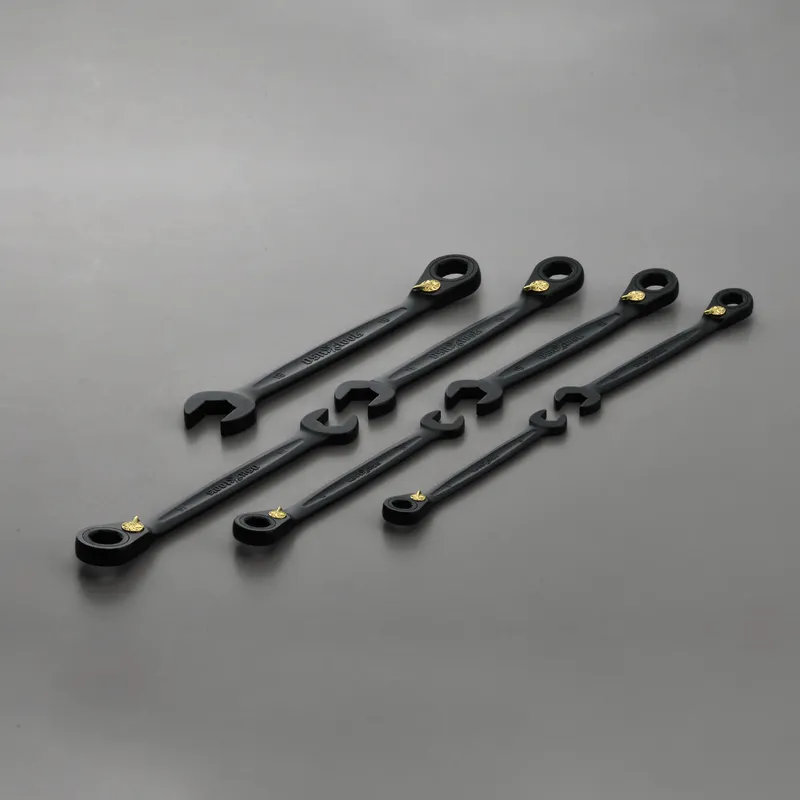
Ratcheting wrenches are commonly used mechanical tools, and the design of their tooth count plays a crucial role in their performance. This article, titled "Understanding the Variations in Tooth Count for Ratcheting Wrenches
Table of Contents (Click to read this paragraph)
- 3Q&A tell you what is the differences in tooth count for ratcheting wrench▼
- Ratcheting Wrench Set Recommended – OSK Hand Tools with Special Black Chromium Plating for Stable, Comfortable Use▼
3Q&A tell you what is the differences in tooth count for ratcheting wrench
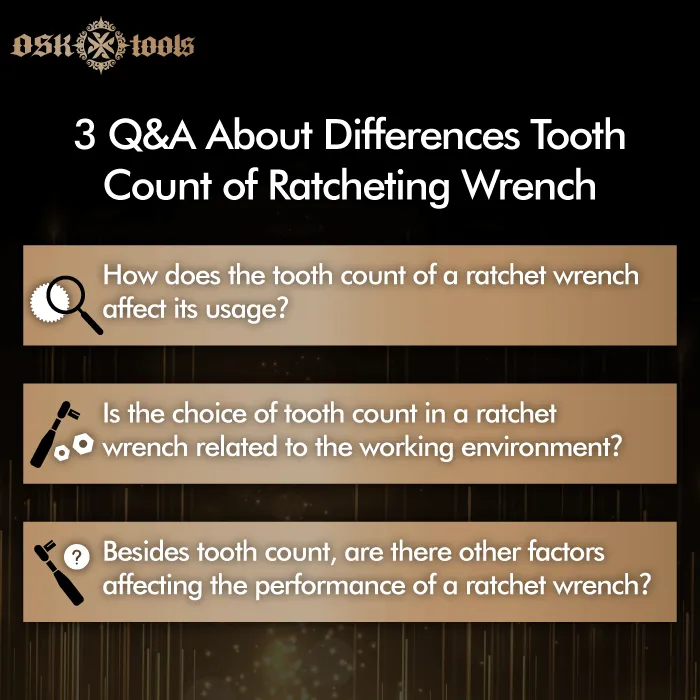
In-Depth Insights in 3 Q&A, aims to explore the impact of different tooth counts through three detailed Q&A sessions. It delves into their influence on torque output, their relevance to various working environments, and other factors affecting overall performance.
Q1.How does the tooth count of a ratcheting wrench affect its usage?
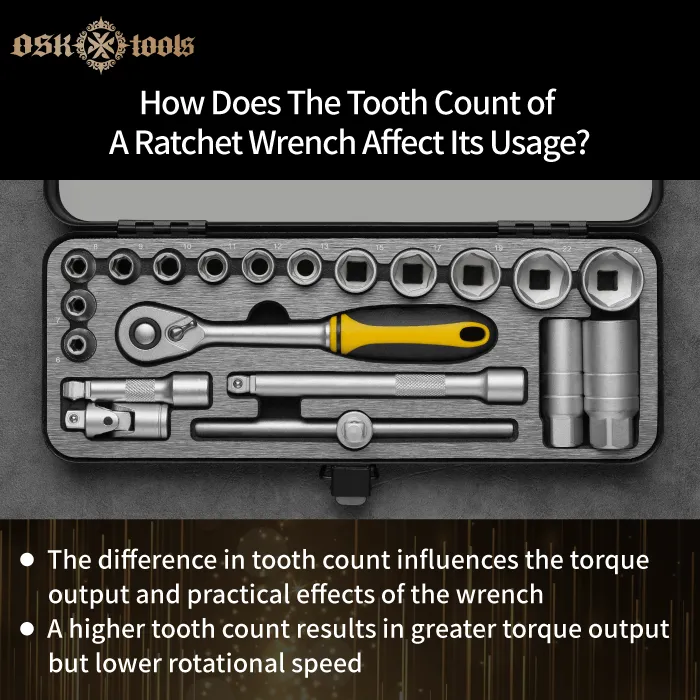
In the design of ratcheting wrenches, the tooth count is a crucial factor directly influencing their performance and efficiency during use. Here is a description and a bullet-pointed professional explanation regarding the impact of tooth count on the usage of ratcheting wrenches:
Torque Output
- Higher Tooth Count Wrenches: Wrenches with more teeth typically provide higher torque output, making them advantageous for tasks requiring more force, such as tightening large bolts or disassembling sturdy components.
- Lower Tooth Count Wrenches: Wrenches with fewer teeth tend to offer lower torque but with a higher rotational speed, making them more suitable for applications that demand quick operations, like assembling small components.
Rotational Speed and Efficiency
- Higher Tooth Count Wrenches: Due to their higher torque output, wrenches with more teeth generally have a slower rotational speed. This makes them suitable for tasks that prioritize power over speed.
- Lower Tooth Count Wrenches: Despite lower torque output, wrenches with fewer teeth exhibit superior performance in situations that require rapid execution due to their higher rotational speed.
Further reading:3 point tell you how to choose the right ratchet wrench set for your needs
Q2.Is the choice of tooth count in a ratcheting wrench related to the working environment?
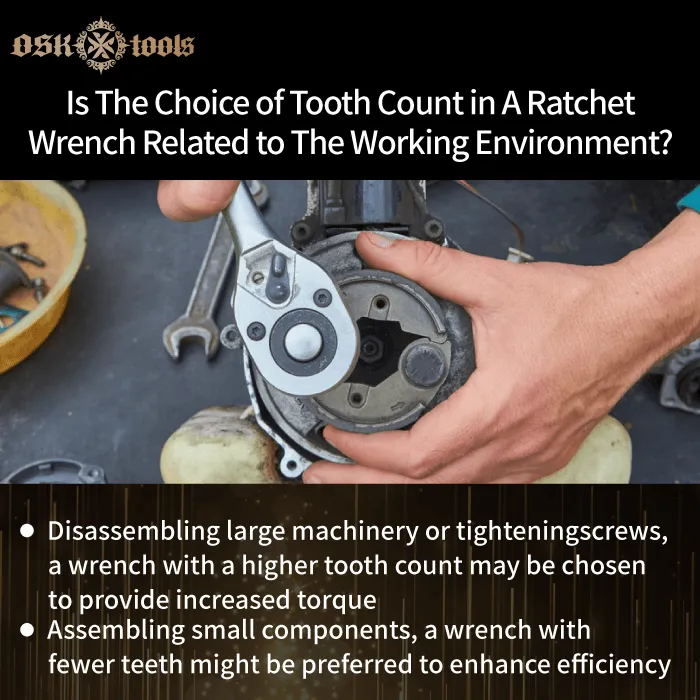
Here is a description and a bullet-pointed professional explanation regarding the relevance of tooth count in ratcheting wrenches to the working environment:
Operating Speed
- High-Speed Operations Environment: In situations requiring rapid execution, such as continuous operations on manufacturing production lines, a wrench with fewer teeth can provide higher rotational speed, enhancing efficiency.
- High-Force Operations Environment: In applications emphasizing power over speed, such as securing large construction components, choosing a wrench with more teeth can provide additional torque.
Application Flexibility
- Versatile Wrenches: If the working environment involves a variety of tasks, opting for a wrench with a moderate tooth count can achieve a balance between torque and speed, providing greater application flexibility.
- Specialized Wrenches: For specific applications, choosing a wrench with a specific tooth count based on requirements ensures optimal performance in particular working environments.
Further reading:What is the principle of ratcheting wrench? 3 key points to understand
In conclusion, the selection of tooth count in ratcheting wrenches should be based on the requirements of the working environment, balancing the demands of torque and speed to ensure the wrench can effectively address specific application scenarios.
Q3.Besides tooth count, are there other factors affecting the performance of a ratcheting wrench?

In the performance of ratcheting wrenches, aside from tooth count, there are other crucial factors that impact their overall functionality. Here is a professional explanation of other factors influencing the performance of ratcheting wrenches:
Gear Material
The material of the ratcheting wrench's gears directly influences its durability and load-bearing capacity. High-quality, wear-resistant materials enhance the tool's lifespan, reduce wear, and ensure stable performance.
Overall Design
The overall design of the ratcheting wrench includes gear configuration, mechanical structure, and external shape. A well-designed ratcheting wrench improves operational comfort, stability, and reliability.
Manufacturing Processes
The manufacturing processes directly relate to the precision and quality of the wrench. Excellent manufacturing processes ensure the precision of each component, enhancing the consistency of the tool's performance.
Anti-slip Performance
Anti-slip performance becomes crucial when ratcheting wrenches are used in low lubrication or humid working environments. Effective anti-slip design ensures stable operation under various conditions, enhancing safety.
The Ratcheting Wrench Recommended Choice72-Tooth Design, Ensuring Stable Rotation for Task Completion
Through this article, everyone should have a deeper understanding of the relationship between the number of teeth and the performance of a ratcheting wrench. Compared to regular wrenches, a ratcheting wrench can be applied in more scenarios. With a set of ratcheting wrench gloves and the use of OSK black chrome-plated hand tools that have passed the 96-hour salt spray test, the 72-tooth design effortlessly completes tasks such as assembling and disassembling nuts, providing a sense of accomplishment in accomplishing maintenance work independently! Ratcheting wrench recommended by OSK Hand Tools brand, making OSK hand tools your reliable partner in improving efficiency.
Released on 2024-01-12|Last updated on 2024-01-18 | 2970
OSK Tools-Wrench Brand
Phone: +1 949 372 2831(Click to call)
Facebook:OSK Tools(Click to visit)
FB Messenger:OSK Tools(Click to DM)
Service Time: 09:00-18:00 on weekdays


